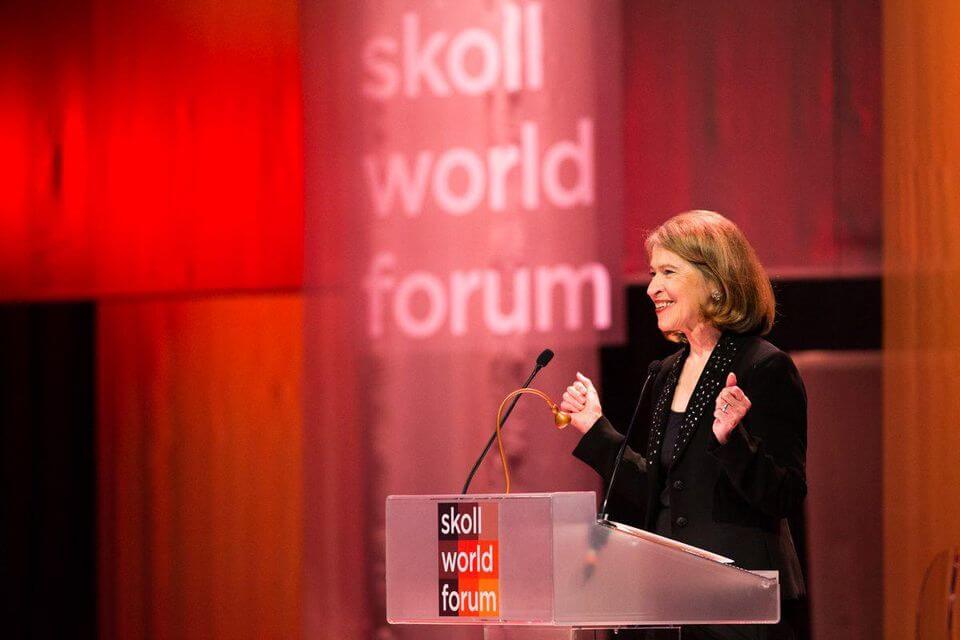Business Strategy for the Social Sector: In Praise of Economist Sharon Oster’s 6 Forces Model
To succeed, must nonprofit leaders treat their organization as rigorously as a business? Must they heed the core lessons of business strategy? Yes, definitely. Or must they recognize that a nonprofit is fundamentally different from a for-profit enterprise? Must they learn to operate in an environment unlike the one that business leaders are used to navigating? Yes, definitely.
Working through that apparent conundrum is central to the task of strategic leadership in the nonprofit sector. High-performance nonprofit organizations, we have learned over many decades of studying them, closely resemble high-performance companies—except for crucial ways in which they don’t resemble companies at all.
Sharon Oster is a pioneer in the field of organizational strategy
Photo: Harold Shapiro
No student of nonprofit management has done more to illuminate this vital truth than Sharon Oster, the Frederic D. Wolfe Professor of Management and Entrepreneurship at Yale School of Management and the author of Strategic Management for Nonprofit Organizations: Theory and Cases (first published in 1990), a landmark work that has strongly influenced our own thinking about what enables nonprofits to flourish within their distinctively competitive markets.
Yesterday, Oster received the 2018 Irwin Outstanding Educator Award for Excellence in MBA/Executive Education from the Academy of Management (AOM) at its annual meeting in Chicago. This is one among numerous awards that Oster has earned, and it presents a perfect occasion for highlighting some of her core insights (which Bill also did as part of his remarks and tribute to Oster on Sunday evening for the Irwin Award Ceremony).
To appreciate what Oster brings to the study of organizational strategy, let’s start by considering another titan of that discipline—Michael E. Porter, Bishop William Lawrence University Professor at Harvard Business School and author of Competitive Strategy: Techniques for Analyzing Industries and Competitors (1980). Porter famously demonstrated that every company must contend with five fundamental forces: direct competitors, potential new entrants to a market, suppliers, customers, and substitute products. Porter’s decisive contribution to business strategy lay in highlighting the diversity and complexity of these forces.
Oster, in explaining the challenges that define nonprofit management, takes Porter’s framework and adapts it in two important respects. Moreover, she does us all the rare service of adapting Porter’s seminal model for nonprofits instead of introducing some new version with more obscure terminology just for the sake of it.
First, she replaces Porter’s “customers” force with a pair of forces that are essentially absent from the for-profit marketplace: user groups (also known as beneficiary groups) and funding groups (including foundations, governments, and the like). Consequently, Oster’s framework has become known as the “six forces model.” The key insight here is that those who pay for a nonprofit good or service are often distinct from those who benefit from that good or service. Adopting an exclusively “customer-centric” approach to strategy, therefore, is rarely a viable option for nonprofit leaders.
Second, Oster reframes the logic by which an organization interacts with the forces that operate in its market. Whereas Porter referred to a “rivalry among existing competitors,” Oster focuses on “relations among existing organizations.” In doing so, she gives much-needed emphasis to the delicate play of both cooperation and competition that characterizes the nonprofit sector.
Oster’s model, in short, helps reveal just how complex—and in some cases, counter-intuitive—the dynamics of nonprofit strategy can be. No wonder that our friend and colleague Jim Collins, the bestselling author of Good to Great and other cornerstone management titles, says that leading a nonprofit is more challenging than leading a for-profit company! (See his Foreword to our book, Engine of Impact.) Responding to five competitive forces is difficult enough. But maneuvering one’s way though six forces will test the mettle of even the most seasoned and agile leader.
The award that AOM is bestowing on Oster relates to her work as an educator. While we can’t speak directly to her achievements in MBA and executive education classrooms, we can affirm that she has taught us a great deal. We encourage every nonprofit leader to learn from her as well. As we emphasize in Engine of Impact, nonprofit leaders simply must undertake their organization’s strategic analysis. In doing so, there are tremendous benefits from applying a robust model for competitive analysis, such as Oster’s six forces model, in order to ensure that the strategy they are using to achieve their mission is sound.
Originally published in Forbes

